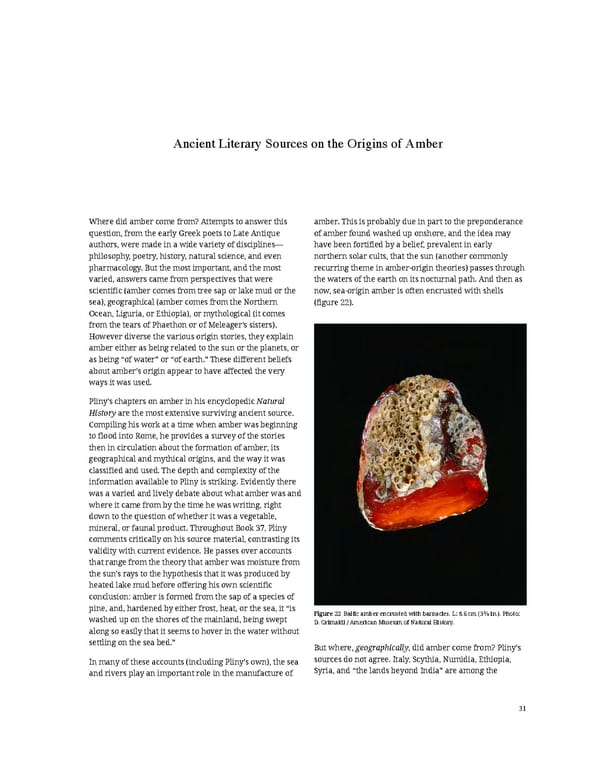Ancient Literary Sources on the Origins of Amber Where did amber come from? Attempts to answer this amber. This is probably due in part to the preponderance question, from the early Greek poets to Late Antique of amber found washed up onshore, and the idea may authors, were made in a wide variety of disciplines— have been fortified by a belief, prevalent in early philosophy, poetry, history, natural science, and even northern solar cults, that the sun (another commonly pharmacology. But the most important, and the most recurring theme in amber-origin theories) passes through varied, answers came from perspectives that were the waters of the earth on its nocturnal path. And then as scientific (amber comes from tree sap or lake mud or the now, sea-origin amber is often encrusted with shells sea), geographical (amber comes from the Northern (figure 22). Ocean, Liguria, or Ethiopia), or mythological (it comes from the tears of Phaethon or of Meleager’s sisters). However diverse the various origin stories, they explain amber either as being related to the sun or the planets, or as being “of water” or “of earth.” These different beliefs about amber’s origin appear to have affected the very ways it was used. Pliny’s chapters on amber in his encyclopedic Natural History are the most extensive surviving ancient source. Compiling his work at a time when amber was beginning to flood into Rome, he provides a survey of the stories then in circulation about the formation of amber, its geographical and mythical origins, and the way it was classified and used. The depth and complexity of the information available to Pliny is striking. Evidently there was a varied and lively debate about what amber was and where it came from by the time he was writing, right down to the question of whether it was a vegetable, mineral, or faunal product. Throughout Book 37, Pliny comments critically on his source material, contrasting its validity with current evidence. He passes over accounts that range from the theory that amber was moisture from the sun’s rays to the hypothesis that it was produced by heated lake mud before offering his own scientific conclusion: amber is formed from the sap of a species of pine, and, hardened by either frost, heat, or the sea, it “is Figure 22 Baltic amber encrusted with barnacles. L: 8.6 cm (33⁄ in.). Photo: washed up on the shores of the mainland, being swept 8 D. Grimaldi / American Museum of Natural History. along so easily that it seems to hover in the water without settling on the sea bed.” But where, geographically, did amber come from? Pliny’s In many of these accounts (including Pliny’s own), the sea sources do not agree. Italy, Scythia, Numidia, Ethiopia, and rivers play an important role in the manufacture of Syria, and “the lands beyond India” are among the 31
 Ancient Carved Ambers in the J. Paul Getty Museum Page 40 Page 42
Ancient Carved Ambers in the J. Paul Getty Museum Page 40 Page 42